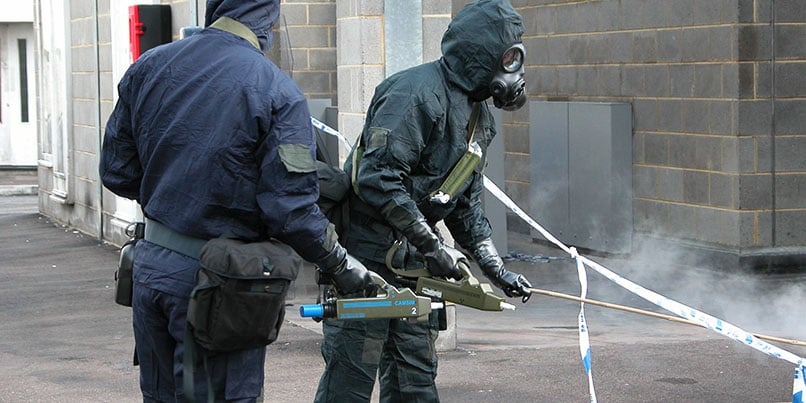
As part of their quest to reduce the number of reported industrial incidents, plant operators and official bodies are focussing extensively on regulations and compliance to do everything they can to eliminate the risk of potentially serious incidents occurring. However, if an incident does occur it is crucial for all staff to have the skills and knowledge required to understand and handle the outcome of an accident. Training is key here and this is where the challenge lies: How can organisations replicate real-world situations, without actually releasing hazardous agents into the environment?
Traditionally, training has been achieved either using classroom or field-based exercises. The advantages of these traditional methods are that they are easily organised and conventional detection instruments are often readily available. Signs and hand held notes used by trainees around the training area or classroom to show the expected level of instrument readings at different locations are easily made and inexpensive.
However, using live check sources and releasing substances into the environment, even on a limited scale, can present a potential risk to exercise participants and requires strict compliance with health and safety regulations. In addition, the use of printed signs does little to help trainees understand the correct use of detection equipment or the best methods of interpreting readings under different operating conditions, which can affect things greatly.
On the other hand, new generations of intelligent computer based simulation tools, such as our PlumeSIM-SMART system, are designed to be used in a wide range of industrial scenarios, including the release of radiological, chemical and petrochemical gasses, vapours or agents and offer a real, workable alternative to conventional training methods. They can be used by students working in the designated training location, which can be up to 2,500km in area, and simulate real-life detection instruments. The system allows an instructor to create, run and optimise each simulation training exercise from a central point, with the ability to influence the readings that students should obtain across the training area at different times or phases of each exercise. And even though it is a new technology, it is available on low cost annual user licences, which runs on a standard laptop connected wirelessly to one or more handheld smart devices or mobiles (SMART-SIM).